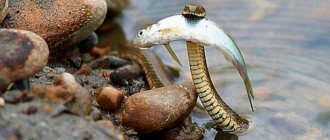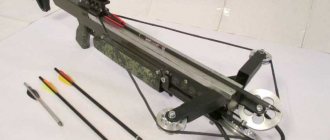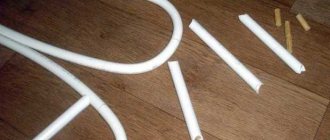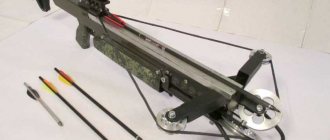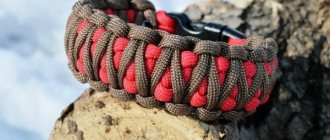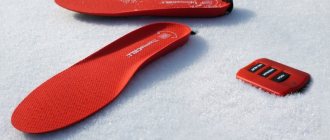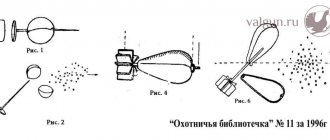Description of mousetraps
An automatic mouse trap is a device designed to catch mice or other small rodents. In order for the animal to enter the design of such a product, special baits are used. As a result of the rodent's attempt to get food, the position of the lever is disrupted. Then, with the help of specially organized weights, the support or equipped trigger mechanism is overturned. The result is an animal caught in a trap.
An automatic mouse trap is a device designed to catch mice or other small rodents.
Additional Information! Moreover, it is necessary to take into account that the animal may be killed or simply caught when caught.
Types of mousetraps
According to the production method, products are divided into:
- Homemade.
- Purchased.
Purchased ones are designed according to different operating principles:
- The classic one looks like a lever attached to a spring and an arc. When the mouse touches the bait, a locking device is triggered, which removes the animal's internal organs and breaks the area. Sometimes the arc is equipped with teeth to enhance the effect. But, sometimes, the rodent still manages to avoid mortal danger.
- The cage, at its core, is a locking product. Therefore, if it is used, the animal is not killed, but only isolated.
- A hole trap is a tunnel with a hole in the top and bait. Gnawing through the blocking thread, the animal itself tightens the noose.
- The glue trap has a surface with such a viscous substance in texture that the mouse simply sticks to it and gets entangled.
- Based on the principle of deep capacity. A bridge leads to the hole in it, passing through which the animal gets inside the vessel. The only condition for the functionality of such a design is its sufficiently high volume, which is necessary so that the animal cannot get out.
- The trap is based on the principle of the jaw. At the base there is a lever, pressing the paw on which the mouse itself provokes the slamming of the trap. As a result, such an action is fatal for the rodent.
- Electric mousetraps, the principle of operation of which is based on electric shock to rodents entering the structure.
Based on the number of uses without recharging and re-installation, two main trap designs can be distinguished:
- Reusable - in them the cocking mechanism rotates to its original position after the animal falls into the trap. In this case, the product is ready for repeated exposure. Thus, these types of devices can catch not just one rodent, but several at once.
- Disposable – these are capable of catching only one animal.
Reusable traps
As the name suggests, reusable traps are those designed for repeated use, which distinguishes them from disposable mousetraps.
The swing principle
This ingenious device is powered by gravity. A small tube made of thick cardboard (you can take a sleeve left over after using rolled towels) with a bait placed inside is pierced in the transverse part with strong wire or a wooden skewer. The latter, in turn, is installed above the bowl so that the ends of the sleeve do not touch the edges of the container. If the tube is too long, cut off the excess cardboard.
An inclined platform or a shallow ladder is installed at one of the holes (opposite the bait) along which the rodent can climb into the tube. The balance bar will tip over under the weight of the animal, and the mouse will end up in the container. Filling it with water or simply greasing the walls so that the mouse cannot climb out depends on the degree of your peacefulness.
When one pest is caught, the device will immediately return to its original position and will be ready to catch the next one, you just need to put the bait inside.
Trap trap
You will need:
- cardboard box (approximately 15x15 cm);
- a sheet of paper (A-4 format);
- stationery tape;
- student wooden ruler;
- a piece of bread fried in lard, sunflower seeds, etc.
Place the “deliciousness” prepared for the mouse at the bottom of the box. Using tape, we fix a paper sheet on the top of the future trap. Then, using a wallpaper or sharp kitchen knife, make a small cross-shaped cut in the center of the lid. All that remains is to attach an adapter bridge (wooden ruler) to the structure. The mouse certainly cannot get out of such a “trap” on its own.
Spinning drum
This mousetrap requires an empty soda can. The can, as in the previous version, is placed on a rotating axis. The outer walls of the aluminum container are generously greased with Yantar cheese or meat pate, which is sprinkled with breadcrumbs. The role of a ladder can be played by a shoe horn fixed at the edge of the bucket. It is not difficult to assume that an animal that climbs onto a jar will immediately turn over and fall to the bottom of the vessel.
Plastic bottle traps
There are many varieties of such “traps”, but what they have in common is that they are made from the familiar PET bottle. The option below can be assembled in literally 5 minutes.
Cut off the neck of a liter plastic container and place bait on the bottom. Turn the resulting funnel over and insert it into the base. Then they fasten the parts of the structure with tape - the mouse trap made from a plastic bottle is ready.
Plastic bottle traps
At the final stage of manufacturing, the walls of the plastic cone are lubricated with a small amount of any vegetable oil. You need to attach a ramp to the bottle, the role of which can be successfully played by a school ruler or a flat wooden strip. Having climbed onto the container, the rodent slides inside the funnel and falls through the neck to the bottom, where all it can do is console itself with the bait.
How to make a mousetrap with your own hands
Purchased traps are quite popular, although those who have at least once struggled with rodents prefer to make such designs themselves. Moreover, you can use any material - since you can make a mousetrap of different operating principles.
Purchased traps are quite popular, although those who have at least once struggled with rodents prefer to make such designs themselves.
From a plastic bottle
Homemade mousetraps can be made from plastic bottles. This is one of the simplest options, since finding such material does not present any problems. In addition to a plastic 1.5 or 2 liter bottle, it is worth taking:
- A fairly thick rope 1 m long.
- Scissors.
- Awl.
For production you need:
- Cut off the neck so that the plastic bottle remains the same diameter.
- A hole is made in the upper part of the bottle, to which the end of the rope is attached using a knot.
- The second end is fixed to the table.
- Place bait inside the bottle at the very bottom.
- The bottle is fixed in such a way that part of it hangs over the edge of the table.
The principle of operation is that when the animal climbs inside the structure in order to eat the bait, the bottle tips over from the table under its weight. But the fixing rope prevents it from falling to the floor. Thus, the animal hangs in the bottle in the air. He can't get back.
This plastic bottle mouse trap is humane and keeps the mouse alive.
This plastic bottle mouse trap is humane and keeps the mouse alive.
From a glass jar
Another extremely simple design is a three-liter glass jar. The trap is quite effective - the main thing is to set it up correctly. To do this you need:
- Place bait inside that releases an intense odor.
- Tighten a piece of plain paper over the neck of the container with an elastic band.
- Then carefully cut it into a cross with a sharp knife.
- Place the jar on the bottom. Carefully place a small bar next to the jar, which will act as a kind of bridge.
Important! The principle of operation is that when an animal, sensing the smell, climbs up the bridge, it reaches the neck covered with paper and, under its own weight, falls inside the glass container.
From the bucket
You can make a reusable trap from a metal or plastic bucket. It will work on the principle of a swing. And you can make it from any available materials:
- You need to take a fairly thick wire and fix it across the bucket.
- A narrow wooden block must be fixed to the iron wire. It can be replaced with a thick cardboard strip. But it must be taken into account that the length of this element should be slightly less than the diameter of the bucket at the top.
- One end should be on the rim of the container. Whereas the other one does not reach him.
- In order for the structure to work correctly, it is necessary to achieve such a position of the wooden block or cardboard in which the element will always be in a horizontal position with its plane.
The principle of operation is based on the fact that the animal will climb onto the edge of the bucket using a bridge provided. Then, seeing the bait, which is located directly in the middle of the wooden block, the mouse will climb onto it from the side where it does not reach the rim. And as the structure turns over, the rodent will simply slide into the bucket. For such a homemade product, it is important to install it correctly so that there is no access from the fixed end.
The principle of operation is based on the fact that the animal will climb onto the edge of the bucket using a bridge provided.
Wooden
You can easily make a trap from a wooden box. Its operation scheme is based on the following principle:
- You need to put bait in a box made of wood or some other material. It is advisable to use one that emits an intense odor.
- Then make a round hole in one of the walls. For mice it should be made no more than 5 cm. Then, if the trap is designed for rats, the hole can be increased to 7 cm in diameter. Please note that the hole should be located at a height of no more than 5 cm from the floor level.
- Attach iron wires to the hole from the inside along the entire diameter. They should be about 5-8 cm in length, depending on what rodent they are designed for.
- Such a trap is installed directly on the floor in those places where animals have been seen, both inside the house and outside the house.
Additional Information! When an animal crawls through the hole and stands on the wires, it will fall through them and will no longer be able to crawl out.
Metal
The operation of another design is based on the principle of rotation. For production you need to step by step:
- Take a metal or plastic bucket with a volume of at least 5 liters.
- Place a beer can on the wire. To do this, make a hole in the bottom and pull the material through it.
- Then pull the wire across the top of the bucket in a crosswise direction.
- The central part of the jar is spread with bait or small pieces of lard (preferably smoked) are fixed.
Important! This product is very effective as a mousetrap. In addition, you can use it many times.
In order for the manufacture of such a trap to be successful, it is necessary to place a wooden plank at the desired angle to the edge of the bucket. Moreover, take into account that its length is such that the mouse, having reached its edge, can reach out to the can and try to climb down onto it. This freely rotating part will tip the rodent into the bucket. Therefore, this type of design can be considered to have a humane effect on mice.
In order for the manufacture of such a trap to be successful, it is necessary to place a wooden plank at the desired angle to the edge of the bucket.
Electrical
Electronic or electric traps are designed to kill rodents. They must be used according to the instructions. Of all the products that kill animals, and not those that only catch them, these are an alternative to quick killing that does not make the animals suffer. Provided with a powerful charge of about 1000 Volts, causing instant death.
Electronic or electric traps are designed to kill rodents.
Since the product operates from an outlet or battery, it is necessary to provide a connection to the network or a way to charge the structure. Since such a mousetrap can stand for quite a long time, you need to remember about the charge level. After a certain time, the product simply stops functioning.
Since the product operates from an outlet or battery, it is necessary to provide a connection to the network or a way to charge the structure.
Mouse traps made from scrap materials
As soon as the presence of a mouse is detected, it is urgent to begin making a homemade trap with which you can catch the small pest. Sometimes the most unexpected and, at first glance, completely inappropriate objects are used.
Glass jars
The simplest and most energy-efficient way. To make a mousetrap you will need:
- a jar with a capacity of one and a half liters;
- five or ten-kopeck coin;
- bait.
Many people believe that a piece of cheese is ideal for attracting rodents, but, as it turns out in practice, the smell of smoked sausage, lard crackling or chips attracts a rodent much more strongly.
So, how to make your own trap? Place the jar with the neck down, put the bait under it and, slightly lifting it, place a coin edgewise under the container. The mouse, sensing the bait, will rush headlong towards it, pull it into its hole, touch the coin and end up under the can.
The trap may not work if the minnow decides to have a snack on the spot. In this case, it is recommended to glue the bait above the neck, always on the side where the coin will be.
Instead of a jar, you can use a flower bowl, a small plastic bucket or bowl.
Plastic bottles
You can also catch the minnow using a one and a half liter plastic bottle. The neck of the container is cut off with part of the wall; the length of the cut part should be about 8-10 cm. Place bait on the bottom of the bottle, insert the cut part with the neck inside, match the edges and fix them with tape or a stapler. A ladder made of planks is placed on the bottle so that the mouse can climb up it. Also, the resulting funnel can be greased with vegetable oil.
Beer bottles
The smell of yeast attracts rodents no less than the aroma of smoked sausage. A plastic bottle from recently drunk beer is used in the same way as described above. By placing it where mice most often show themselves. In this case, there is no need for additional bait; the aroma of beer will work as it.
Bucket
Using a plastic or enamel bucket with a capacity of 7-10 liters, you can make several simple traps.
Option one
Bait is poured into the bottom of the bucket; for a better effect, it is flavored with vegetable oil and covered with newspaper, the edges of which are secured with tape or tape. A cross-cut is made in the center of the paper, and a board is placed next to the container itself, which will serve as a ladder. Norushka, having climbed up the piece of wood, will fall into the bucket. Some people pour water at the bottom so that later they don’t have to think about what to do with the living rodent.
Option two
Water is poured into the bucket, not reaching the top 3-5 cm. A little vegetable oil is poured into the liquid, which will act as a supporting layer. Dry leaves, flour, straw are placed on the oil, in general, everything that will cover the water and will not sink. The bait is laid out on them, similar to the first method, a ladder is installed. The mouse climbs into the bucket for bait and drowns.
Option three
Suitable in cases where the lady likes to visit the kitchen table. A ruler is placed on the table without fixing it, so that most of it hangs down, rodent bait is placed on the ruler, and a container filled with water is placed on the floor near the table. The mouse runs for food, and the ruler falls into the bucket along with the rodent.
Cardboard box
A small shoe box is suitable for this trap option. The bait is strung on a thread and, using a needle or glue, fixed to the bottom in the center of the box so that it does not reach the floor. The box is placed on shaky supports (for example, matches) in those places that rodents like to visit. A mouse pulling the bait will most likely knock the box off its unstable supports, ending up in a trap.
How to make a humane mousetrap
Do-it-yourself mousetraps can either kill animals or fix them in a certain position or space.
Do-it-yourself mousetraps can either kill animals or fix them in a certain position or space.
Those that throw animals into a container (organized on the principle of a swing or blocking its exit from the structure) are quite gentle and humane. Since in this case the animals are simply taken away from the house and released.
Since in this case the animals are simply taken away from the house and released.
The best mousetrap in the world
Share this article:
Hello, my dear visitors and readers. Today we will return again to the topic of mice, as the most relevant recently. At least for residents far from the city center and summer residents. As they say - it's season. There is nothing to chew on in the fields and gardens, and hordes of mice enter houses, barns, and summer kitchens for the winter. And they begin to chew on everything, from edible foods, fruits and vegetables to foam plastic. Above my window slopes and on the ceiling in the bathroom, mice perfectly chew the polyurethane foam and spit the husks into the cracks. I don’t know about you, but the mice got the best of me this year. They run along the ceiling, along door and window slopes, and jump like ninjas from a chandelier.
Most of them live in the attic (I have no idea how they get up there). I noted four species of mice. Large black voles, common house grays, small hive mice (they are so called because they usually live in bee hives, feeding on wax) with a long pink nose and a short tail. And recently some other mutants have appeared, medium in size but with a large head, a short tail and long, hard, rat-like stubble on the back. Nightmare.
But I don’t give up, I fight them not to the gut, but to the death. And two of the best mousetraps in the world help me with this. I want to talk about them in this short post.
Over the entire centuries-old history of the confrontation between man and mice, so many different methods and ingenious devices have been invented for catching the latter that it is possible to compile a reference book. Here is a classic design, which has remained without any special modernization for many years.
classic
For me, the design is imperfect, gives a lot of misfires (when the leash is triggered, the mouse often flies into the air past the catching bracket) and requires fine tuning.
multi-shot noose
And a multi-charged noose mousetrap , capable of strangling several individuals at once (again, the unreliability of the triggering mechanism, whether the mouse would gnaw through the control thread or not - the grandmother was wondering in two). And equipping it for combat readiness is quite a tedious task.
humane cage
There are also humane trapping cages for Greenpeace employees, which leave the caught mouse safe and sound. All that remains is to take her a few kilometers from home and release her there, in case she doesn’t find her way home. Someone is fooling around with glue that the mouse will get into and won’t be able to get out. And then put on gloves and rip out the rodent that suddenly died of hunger from the glue. Or sniffing the corpse smell of a woman who died from poison in an unknown underground and swallowed suicide pills. There are also buckets of water and glass, slippery bottles. But all this is not the same, friends, it’s definitely not the same.
the best mousetrap
And here is my secret weapon. Meet us! Bought on occasion at the market in the junk market for 25 rubles, a bunch of little things. I still doubted the choice and asked for another model. But the kindest granny persuaded me - “take it, lad, you won’t go wrong.” As it turned out later, he really made the right decision.
The design is simple as hell. The bait is pinned onto specially designed spikes on the leg. This very paw provokes the spring lid to be triggered, as soon as a hungry and stupid mouse starts gnawing on the bait on the spikes. The sensitivity is unparalleled. The lid opens easily at the slightest touch of a piece of cheese on the foot. And after the lid is slammed shut, other mice cannot eat the bait. So I caught a dozen and a half mice using the same piece of sausage. The small size of the mousetrap eliminates catching by the tail or paw, as happens in the classic model. Just on the spot. Like a sniper rifle, one clap - one mouse corpse.
mousetrap with bait
Here's the catch - captured mice
I placed mousetraps in the attic, one above the bathroom, one above the hallway. Every day I check my catch twice. It rarely happens that I find a captured Mickey Mouse in only one of them. Usually both traps are full of mice at the time of inspection. And they have been working with such a busy schedule for two weeks now. It is easy to calculate that the number of enemy destroyed is close to three dozen. Thirty stars on board the rodent exterminator. Tell me, what other mousetrap is capable of such a result without misfires? So I recommend it. If you see one on sale, grab it without hesitation. You won't regret it.
Such small compact mousetraps will be useful in the house. Reply to this post
Related articles:
- Autonomous electric generator on a suburban area Recently, there has been a tendency to increasingly move the urban population to the suburbs and holiday villages. People began to travel more often to their dachas for longer […]
- Why does the fire blow out in the stove? Chimneys and deflectors. Good afternoon to everyone who visited my notes on housekeeping. Winter (I mean real winter with snow) in our region has not gone well. It's getting more and more rainy, [...]
- How to make a fence in your yard This is how many times, for the second year now, I’ve been planning to make such an interesting and beautiful thing as a fence on my property, like a fence. Last year I got ready too late, by [...]
- Glass wallpaper: how to glue One of the best rolled materials for wall decoration is glass wallpaper. They are so good that it is difficult to refuse to purchase them. Of course, if you have certain […]
How to charge and install a mousetrap
But not everyone wants to use humane analogues. And such people can also be understood, because rodents do not decrease in number, but continue to live. And there is no guarantee that they will not return to the same housing, and even in larger numbers.
Note! Therefore, they use structures that are built on the principle of a trap. In order to properly charge the mousetrap, you must carefully read the instructions for it.
After the trap device is pulled back, a piece of bait should be fixed simultaneously with this manipulation. You need to cock it carefully so as not to touch the bait and not to pinch your hand, since the intensity of the grip is quite strong.
The most effective mousetraps
It must be taken into account that the most effective traps are those that can function repeatedly or catch several rodents at once. Therefore, in order to decide which design is best suited, you should make a rating and understand how large a colony of rodents inhabits a particular room.
It must be taken into account that the most effective traps are those that can function repeatedly or catch several rodents at once.
Thus, the effectiveness in the case of a large number of mice will be shown only by those products that can simultaneously catch many animals, for example, organized according to the principle of a hive or those based on gravitational influence.
So, in the case of a large number of mice, I will show only those products that can catch many animals at the same time.
You can choose any design from the variety presented. And making them with your own hands will significantly speed up the process of getting rid of such a scourge in the house as mice.
You can choose any design from the variety presented.
Advantages of homemade mousetraps
Surprisingly, it occurred to man to fight rodents using the spring traps we are familiar with not so long ago, namely in the last quarter of the 19th century. This is explained by the widespread use of spring steel - a flexible and durable material from which the key mechanism of the mousetrap was made. Such a mouse trap, of course, did not belong to the category of humane mechanisms - an animal caught in it was doomed to death.
Unlike factory spring designs, homemade mousetraps, firstly, are almost free, since they are made from what is in every home, and secondly, if you feel sorry for killing an animal, they can only serve to catch it. At the same time, the trap, made from simple improvised materials, is in no way inferior to its expensive store-bought counterpart.

